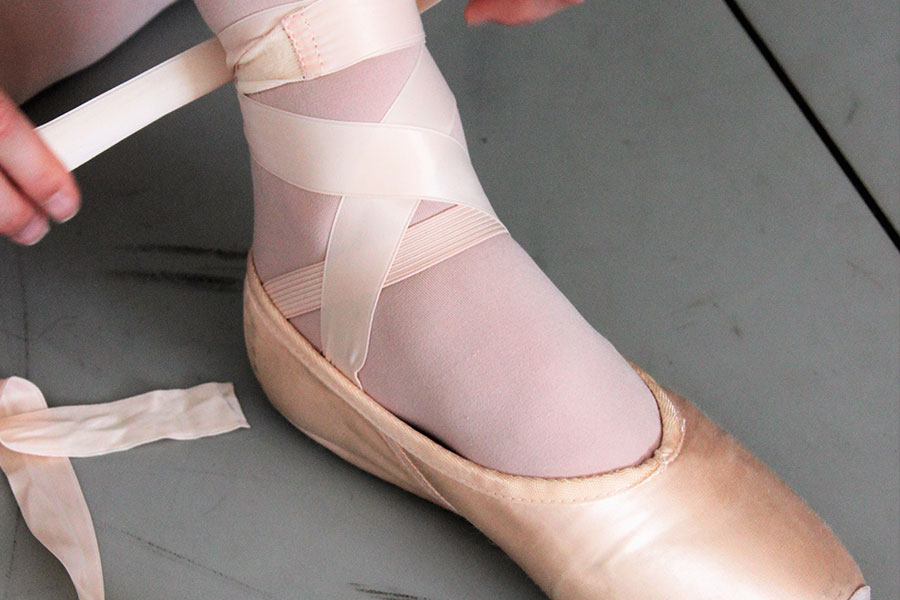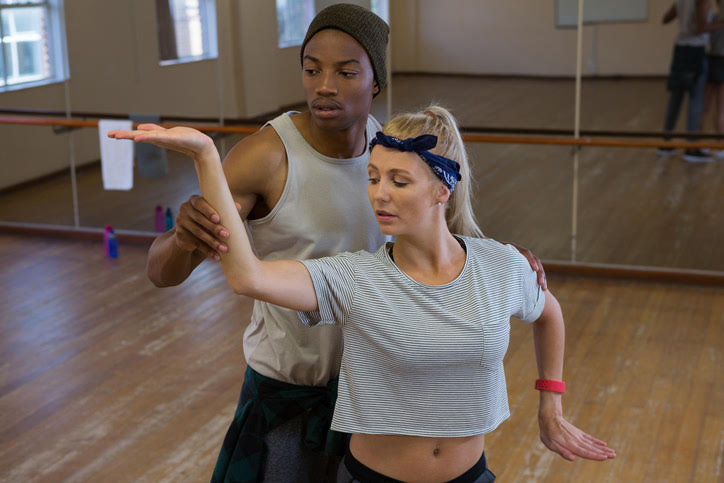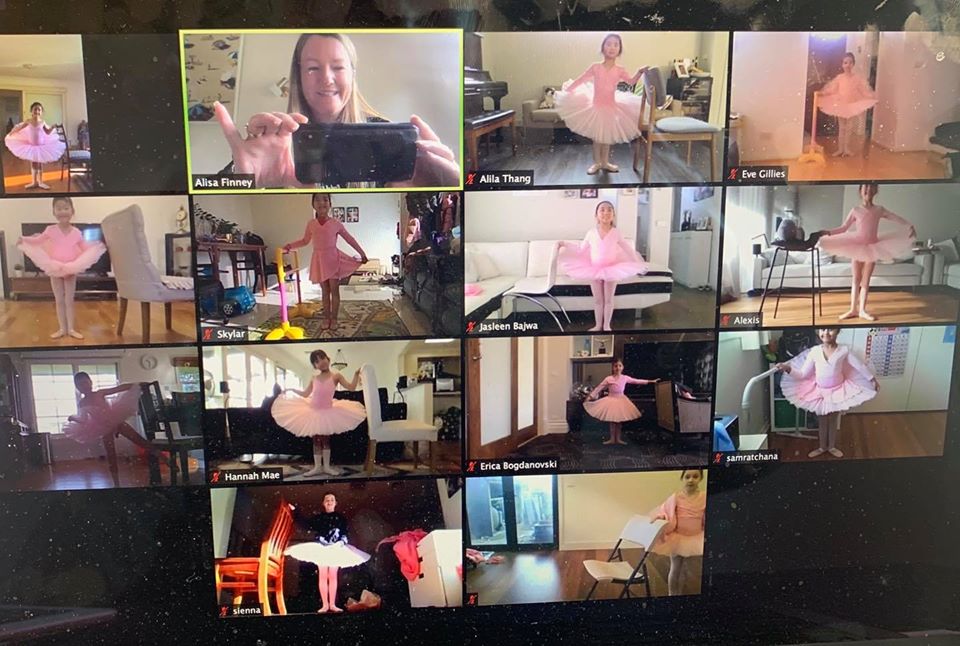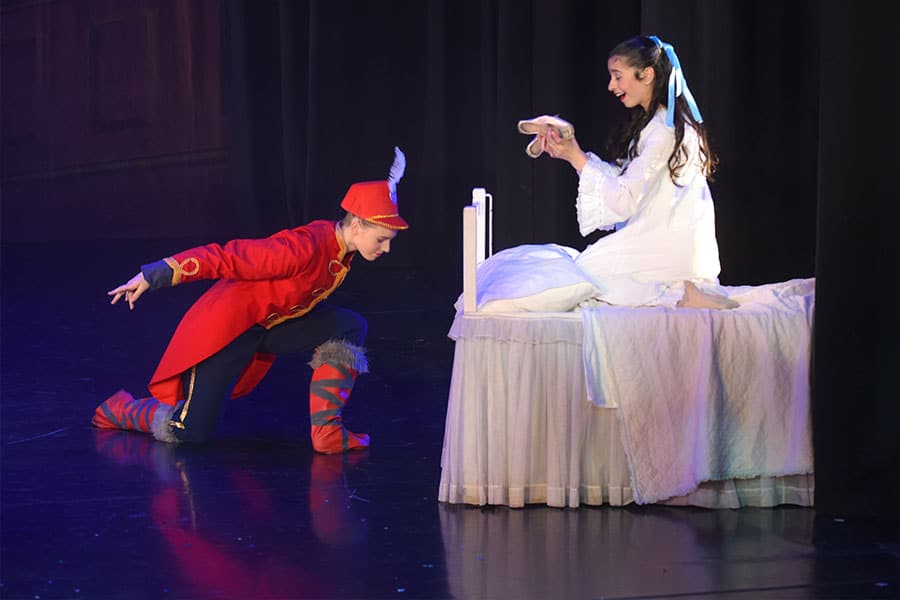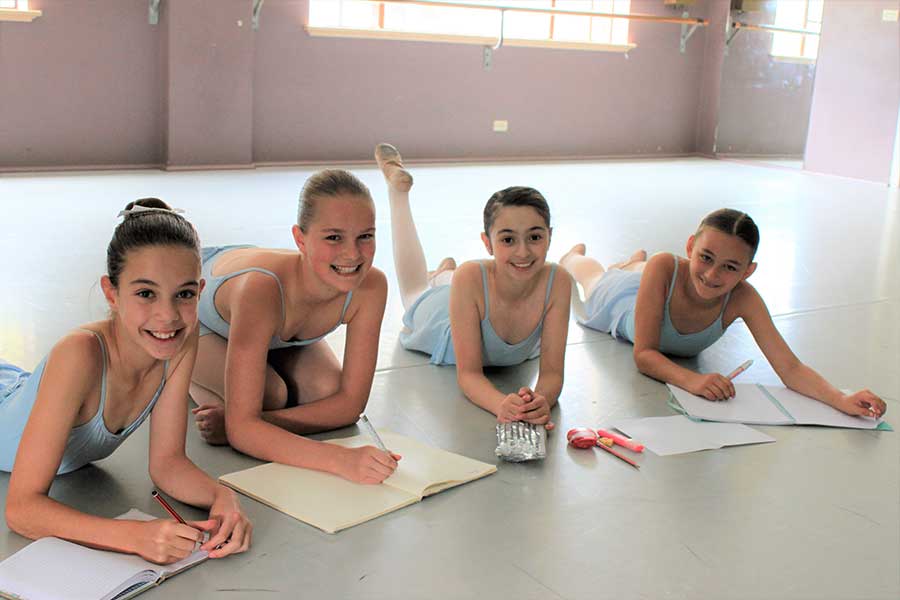Pre-Pointe Assessment
There are basic requirements that all our Gay Wightman School of Ballet and Melbourne Ballet Company Extension Program students must meet in order to train on pointe or participate in pointe classes/rehearsals/choreography. Meeting the below criteria is very important to keep the dancers safe and to help prevent injury. All students must get a pre point assessment with our physiotherapist who specialises in working with dancers. Minimum age to commence pointe work is 11 years and students must be attending a minimum of 3 classical ballet classes weekly in order to maintain the technique and strength required.
Our physiotherapists conduct their dance assessments in adherence to the IADMS (International Association for Dance Medicine & Science) guidelines and the latest research from the world-renowned dance medicine team at the Australian Ballet.
Outlined below are the specific areas assessed by our physiotherapists in the Pre-Pointe Assessment. This guide is intended to provide an insight into the individual elements examined, and to inform our parents and our students of the relevance of each for safe dance practice on pointe.
Areas of assessment
Lateral ankle alignment on rise When rising to demi-pointe, we should see a vertical alignment of the whole leg, ankle and foot. Ankles that roll outwards (laterally) into a ‘sickled’ position can result from a weakness in the lateral muscles and places the lateral ankle at risk of injury.
Medial ankle alignment on rise When rising to demi-pointe, we should see a vertical alignment of the whole leg, ankle and foot. Ankles that roll inwards (medially) into a ‘fished’ position can result from a weakness in the medial muscles of the ankle and places the medial foot, arch and big toe at risk of injury.
Height of rise A consistently high demi-pointe on rise is important to ascertain strength and endurance of the upper calf muscle (gastrocnemius) in the transition from demi to full pointe. An inconsistent height of rise can decrease ankle stability and lead to overuse injuries of the lower calf muscle (soleus) and FHL (flexor hallucis longus).
Foot intrinsic activation on rise When rising to demi pointe, all toes should remain straight and firmly pressing onto the floor. Curling and gripping toes indicate a weakness in the intrinsic muscles of the foot. In addition to toe length, the foot intrinsic muscles assist with stability on demi pointe, as well as control and power the transition from demi to full pointe.
Upper calf muscle activation When rising to demi pointe and pointing the feet, the activation of the dancer’s upper calf muscles (gastrocnemius) needs to be early and efficient. When this is incorrect, the soleus muscle and FHL over work, leading to tightness and overuse injuries. The gastrocnemius is the prime mover muscle when pointing and rising, the power muscle for relevé and allegro, and an important shock absorber when landing from jumps.
Quality of rise Rises need to be performed in a controlled manner, with the dancer lowering from demi pointe slowly and with good control. Sometimes we see the dancer dropping the heel down, demonstrating poor eccentric muscular control in the upper calf muscle, which is important for ideal shock absorption control when landing from jumps, as well as protecting the back of the ankle joint and Achilles tendon.
Knee control on rise The dancer needs to have excellent terminal extension control in the knee as they rise to demi- pointe, showing good ‘pull up’ through her knees. If this is poor, the result is a slight bend of the knees to initiate the rise. Bending the knee to rise biases the use of the soleus to perform the rise, instead of the gastrocnemius, and places greater force on the front of the knee and back of the ankle joint.
Pelvic control on rise When rising to demi pointe, the dancer should display good pelvic stability. Often the pelvis can hitch and/or rotate to the opposite side, indicating a weakness in the supporting gluteal and abdominal muscles. This can also relate to a weakness in the calf muscle, where the dancer uses the hitch in an attempt to rise to a higher demi pointe.
Calf strength to rise A minimum of 25 excellent rises before fatigue is recommended for pointe work.
Calf length/Ankle Flexibility This is measured with a knee to wall lunge and looks at the length of the calf muscles; the figures should be at or above 10cm. Tight calf muscles and resulting ankle stiffness can reduce the size of the demi-plié, cause difficulty keeping the heels down when landing from jumps, and encourage rolling in of the ankles (pronation) This can also place increased pressure on the surrounding joints.
Pointe Flexibility A pointe flexibility at or above 170°is recommended for pointe work. This allows the leg, ankle, foot and toes to be stacked in a vertical alignment when on pointe. When the pointe is stiffer than 170°, the dancer will often struggle to get up on to full pointe and compensates elsewhere in the body.
Big Toe Extension Flexibility A minimum of 90° extension in the big toe joint is recommended for perpendicular foot-to-floor alignment. When this joint is stiff, the height of the demi pointe can be reduced, causing the foot to be pushed laterally into a ‘sickled’ out position.
Hallux Valgus Angle Hallux valgus is the angle at which the big toe angles inwards towards the 2nd toe. Up to 15° is considered within normal limits. This malalignment of the 1st big toe joint indicates weakness in the abductor hallucis and flexor hallucis longus muscles and can lead to bunion development.
Lateral ankle strength The lateral ankle muscles support and stabilize the outside of the ankle and are important in maintaining ideal ankle alignment on rise and reducing the risk of lateral ankle injury. These are a common source of weakness, especially in young dancers.
Medial ankle strength These muscles support and stabilize the inside of the ankle and are important in maintaining ideal foot and ankle alignment and reducing the risk of medial ankle injury.
Intrinsic foot muscle activation with pointe The intrinsic foot muscles are required to keep the toes long, straight and splinted when rising and pointing the foot. When pointing the intrinsic muscles maintain straight toe alignment within the pointe shoe. This is often a weakness, especially in the young dancer, and can take many weeks to develop successfully.
Turnout flexibility and strength Turnout relates to the range of motion and strength of the hip external rotator muscles. Ideally, ballet dancers should be able to achieve at least 45° of turnout flexibility from each hip, and have strength within 12° of the flexibility value. Symmetry and strength allow for even forces to be distributed around the hips. As the dancer’s turnout strength improves, so should many aspects of their technique, especially those relating to leg alignment control.


